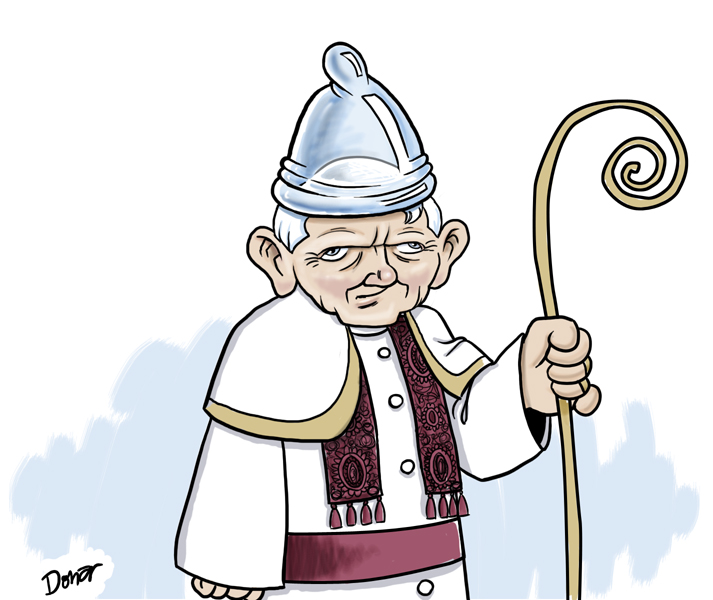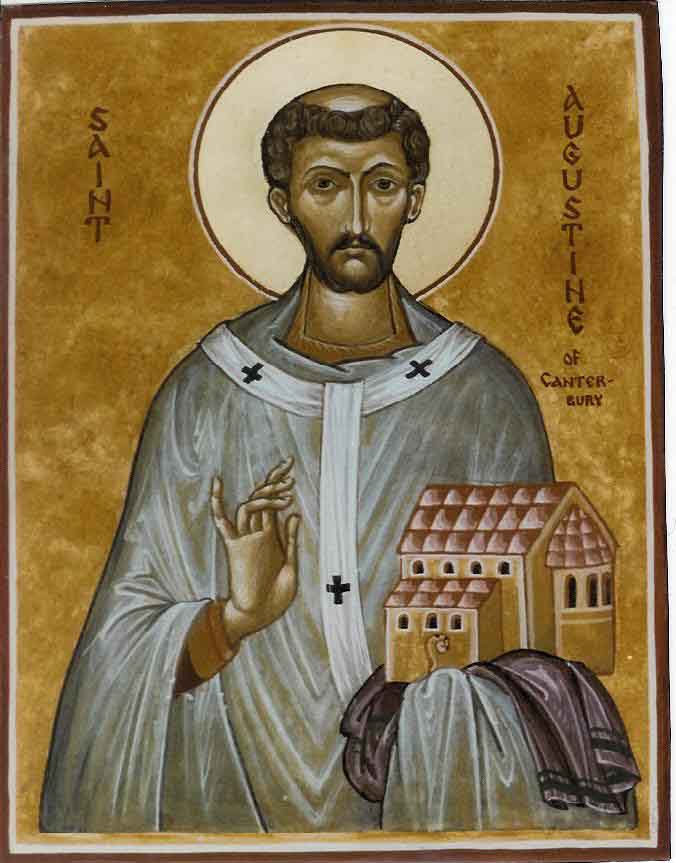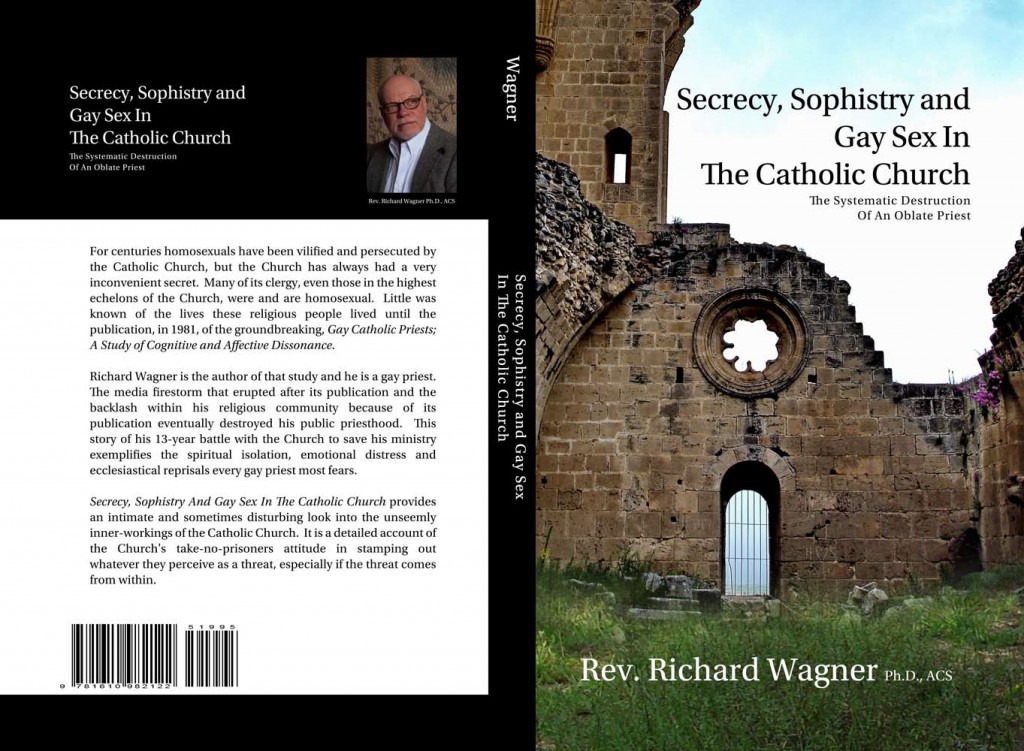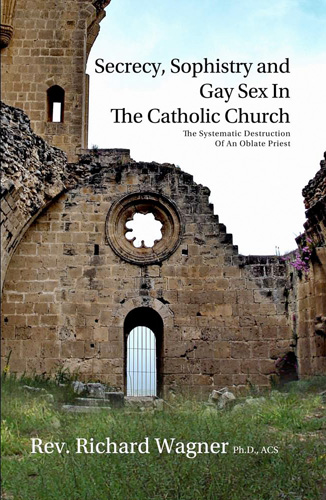Part 4 of a 5-Part Series — Understanding Catholic Moral Theology
Something earthshaking happened the weekend before Thanksgiving last year. It was so dramatic it was felt right round the globe, don’t cha know.
Pope Benedict made a most extraordinary comment in an interview with the German journalist, Peter Seewald, in July 2010. He said that condom use could be justified in some cases to help stop the spread of AIDS. This startling statement came to light as part of a promotional push for Seewald’s latest book on Cardinal Ratzinger, (now Benedict XVI): Light of the World: The Pope, the Church and the Signs of the Times.
In order to see just how astonishing this is one need only look back to the spring of the previous year. In March, 2009, during his trip to Cameroon, the pope not only reaffirmed Church teaching on the unacceptability of condom use under any circumstance, including the effort to diminish the spread of AIDS. He went on to say that he thought condom use might actually make HIV infection worse. This reiteration of the Vatican’s hard line, especially on African soil, coupled with his casual dismissal of established scientific evidence, drew immediate criticism from around the world. It was yet another public relations nightmare this pontiff didn’t need, or apparently want.
But now Benedict says condoms are not “a real or moral solution” to the AIDS epidemic, adding, “that can really lie only in a humanization of sexuality.” But he also says that “there may be a basis in the case of some individuals, as perhaps when a male prostitute uses a condom, where this can be a first step in the direction of a moralization, a first assumption of responsibility.”
To the avid Vatican watcher this is nothing short of revolutionary. I tell you the Catholic world has shifted on its axis, Benedict’s tortured logic aside.
The week that followed the initial revelation of the pope’s condom statement was a maelstrom. The Vatican curia, bishops from around the world as well as Catholic activists all tried to spin his words. Church conservatives insisted the pontiff had been misquoted or misunderstood. — “The pope’s statement on condoms was extremely limited: he did not approve their use or suggest that the Roman Catholic Church was beginning to back away from its prohibition of birth control” said Fr. Joseph Fessio, SJ, one of Benedict’s former student and editor in chief of the very conservative Ignatius Press. The liberal wing of the Church was hopeful. — “It’s a marvelous victory for common sense,” said Jon O’Brien, the head of the Catholic group — Catholics for Choice.
Then, only a couple of days after the original news broke, more startling information came to light. At a news conference in Rome, papal spokesman, the Fr. Frederico Lombardi, said Benedict knew his comments would provoke intense debate, and that the pope meant for his remarks to apply not just to male prostitutes, but also “if you’re a man, a woman, or a transsexual.”
The pope seemed to be clarifying and expanding his comments, instead of walking them back. At this point, my head began to reel. Had he undergone some kind of metanoya? Did he develop a sense of compassion for male (female and transsexual) prostitutes and their johns? Was he finally having second thoughts about all us sexual reprobates and the damnation that awaits us for our unnatural acts? It was utterly astonishing! And who knew the word transsexual was even in the pope’s vocabulary?
Astonishing, because in October 2010 Belgian Archbishop, André-Joseph Léonard, asserted aloud what most hardliners say in private. He said the worldwide AIDS epidemic is a matter of “immanent justice”, i.e. God’s retribution for sodommite depravity.
By week’s end all hell had broken loose. Many prominent conservative Catholics were publicly rejecting the Vatican’s own explanation of what the pope said. They declared that they would only accept a more formal papal pronouncement, like an encyclical. Liberal Catholics, on the other hand, were taking the pontiff at his word. For them the pope had spoken; exceptions to the Vatican’s previously uncompromising ban on the use of artificial contraception CAN be made in the worldwide effort to combat AIDS.
But what is the average pew Catholic supposed to make of all of this?
The pope is appealing to the principle of double effect, a standard of Catholic moral theology since Thomas Aquinas. This doctrine claims that sometimes it is permissible to bring about, a harmful side effect (contraception) in an effort to promote some greater good (the fight against the spread of AIDS). In other words, accepting the lesser of two evils.
No matter how you look at it, this seemingly innocuous papal statement has created a fissure in the bedrock of Catholic moral theology. It is a total game-changer and nothing will ever be quite the same.
Part 1 of this series HERE!
Part 2 of this series HERE!
Part 3 of this series HERE!






